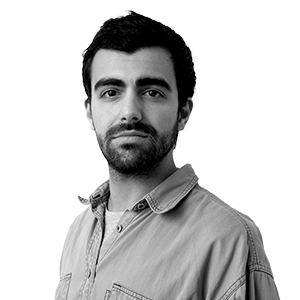Giant step forward for personalized medicine: new blind spots in the genome revealed
Two studies, with the participation of the CRG, expand the catalogue of identified genetic variations


BarcelonaThere are still elements to map on our genes. More than twenty years ago, the scientific community managed to draw a first draft of the human genome, which was very promising, but also incomplete, since there were many DNA fragments that were missing, unidentifiable, or duplicated. In recent decades, researchers have worked to finish deciphering our instruction book (the genome tells cells what functions they should perform), and in 2003, 92% of the DNA in every cell in our body was published. Now, all efforts are directed at unmasking that 8% of material, and an international team, including the Center for Genomic Regulation (CRG) in Barcelona, has managed to go a step further: it has doubled the number of genetic variations known to date.
Researchers have obtained the most comprehensive visualization to date of the human genome using the genes of 1,019 people from 26 populations around the world. The resulting data, shared in two consecutive publications in the journal Nature This Wednesday, they significantly expand the catalog of human genetic variation and allow for a more complete overview. "It's an important step toward mapping the blind spots in the human genome," says Bernardo Rodríguez, a CRG researcher and co-author of one of the studies.
While the first genomes were from white, Western people, this study includes populations from all five continents, as well as structural variants in the human genome, which are large pieces of DNA that until now have been deleted, duplicated, inserted, inverted, or mixed. In fact, Rodríguez assures that it is the "most comprehensive" work published to date on these variations. 59% of the discovered variants were detected in less than 1% of people, a level of rarity that is crucial for the diagnosis of genetic diseases, as it can help filter out harmless variations from others that are directly linked to these pathologies.
Personalized Medicine
In total, the team found and classified more than 167,000 structural variants in the thousand participants, that is, double the number known in the human pangenome, a reference that groups the DNA of many people instead of having a single reference genome. This represents "a giant step towards personalized medicine," as they have reduced the list of suspected mutations (which have gone from tens of thousands to just a few hundred) and, therefore, accelerated the path toward diagnosing rare diseases and also cancer, according to Rodríguez.
One of the current limitations for the researcher is the high cost of the sequencing techniques they used to perform the analysis. However, he is optimistic about the future, as the price of this technology has decreased fivefold in the last five years. For this reason, Rodríguez believes that in a few years, it will be possible to sequence someone's genome to detect these mutations and make an early diagnosis or even anticipate the onset of diseases.
This is a sequencing technique called long-read sequencing, which uses recent technology that reads thousands to tens of thousands of DNA letters at a time, helping to find large amounts of hidden variation undetectable with short reads. The researcher explains that until now, the studies that had been carried out either included many individuals and the techniques they used to analyze had low sensitivity, or included few individuals and the analysis was very sensitive. The research was carried out in collaboration with the European Molecular Biology Laboratory (EMBL) and the Heinrich Heine University of Düsseldorf (HHU).
